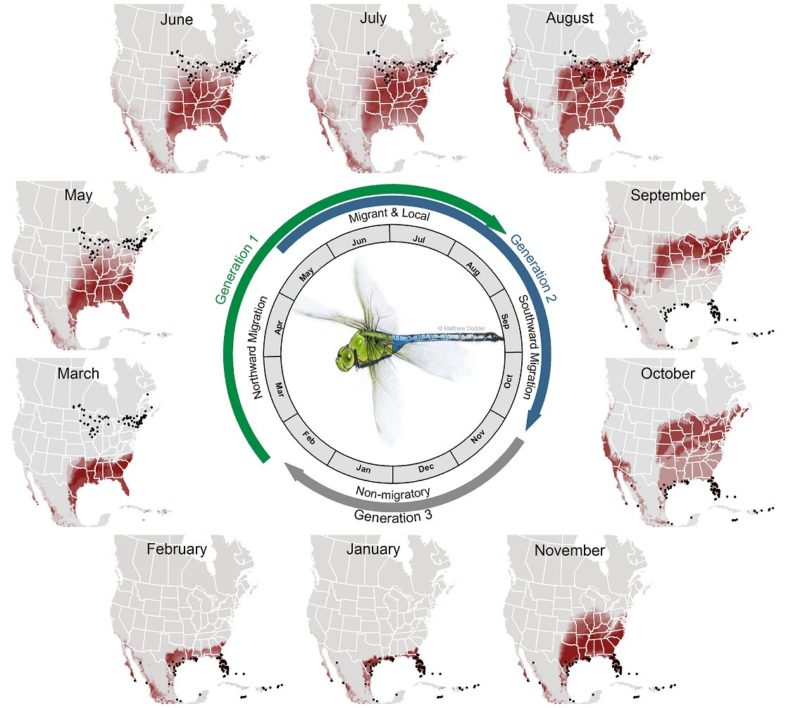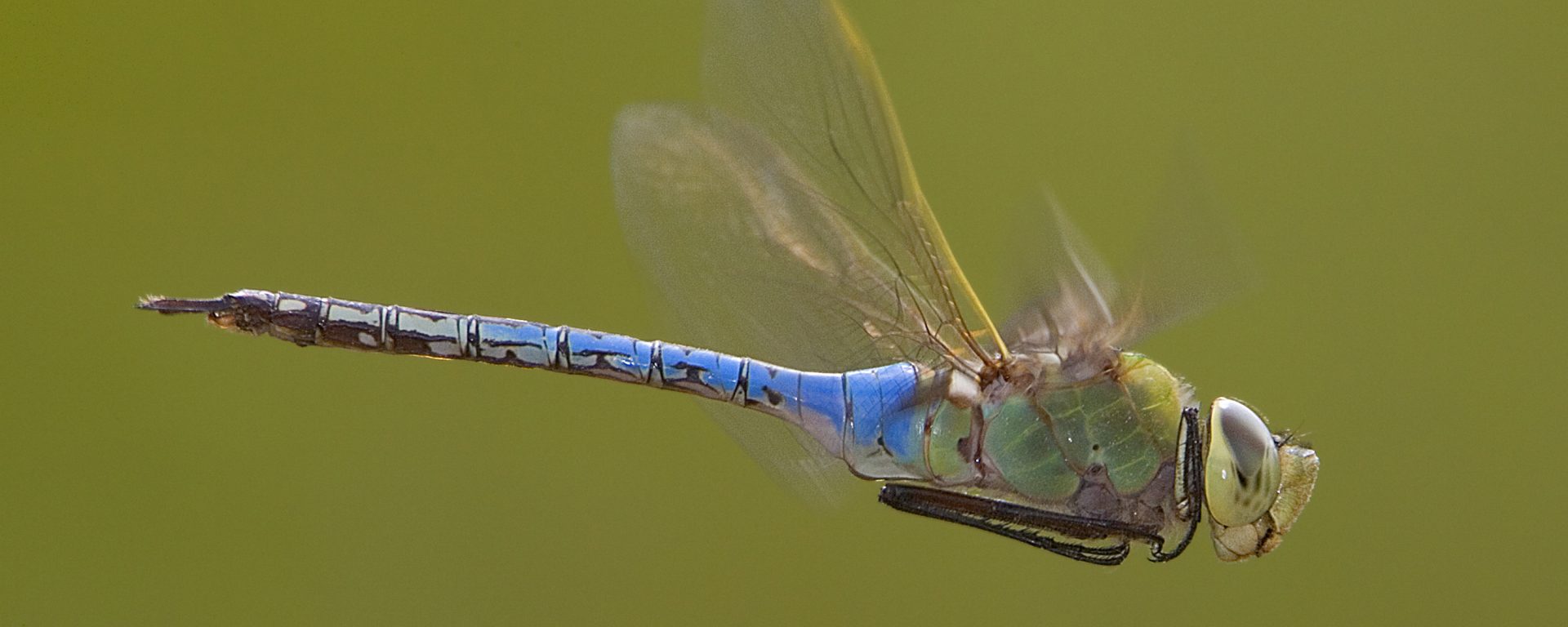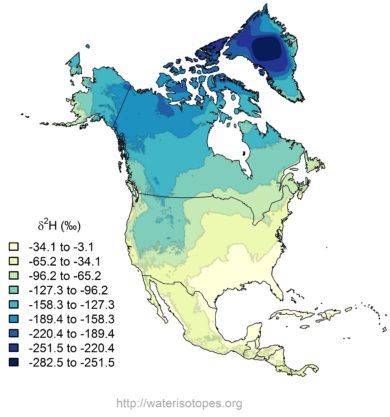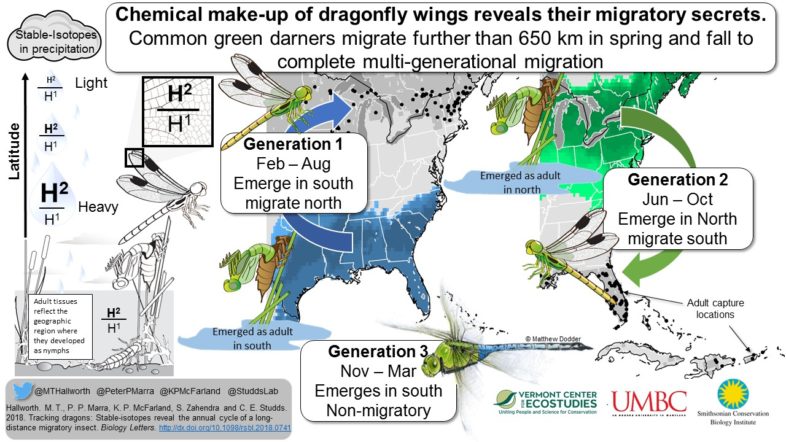The familiar aerial parade of orange and black Monarch butterflies fluttering southward across North America each fall has drawn attention to the tremendous distances this seemingly fragile species migrates. The migration of other insects, however, remain more mysterious, for both the public and scientists alike.
Now, a recent study by VCE’s Kent McFarland and Sara Zahendra, along with colleagues from the University of Maryland, and Smithsonian Conservation Biology Institute explains how the Common Green Darner—a large, abundant dragonfly found across North America—completes its annual migration. Their paper published in Biology Letters describes the full life cycle of this dragonfly, including an astonishing multi-generational migration of over 600 km (373 miles) on average, with some individuals covering more than 2,500 km (1,553 miles).
This discovery provides new insight into understanding insect migrations and life cycles, which is important in a global context. Insects are a critical driver of food webs, so figuring out why their populations are falling dramatically or shifting geographically is important for the future success of a whole range of species, from fish to phoebes.
The overarching goal of this study was to understand the geographic scale and connectivity of dragonfly migration. Remarkably, this was accomplished by examining the chemistry locked in dragonfly wings combined with decades of spring observations of dragonflies from citizen scientists.
McFarland and Zahendra, with the help of citizen scientists and other biologists, spent nearly two years capturing dragonflies throughout eastern North America. They also obtained permission from museums to sample specimens from the Caribbean to Canada.
The scientists examined the prevalence of a stable hydrogen isotope in more than 850 Green Darner wings to infer their natal origins. Why hydrogen? The hydrogen nucleus normally contains a single proton. But a tiny fraction of hydrogen atoms carry one proton and one neutron. It’s called deuterium. It turns out that the amount of deuterium in rainwater varies somewhat predictably in North America. You can map it. The ratio of deuterium to hydrogen in water falling as rain or snow changes on a gradient corresponding roughly on a north-south gradient.
Because dragonflies grow up as nymphs in water fed by local precipitation, they incorporate the local deuterium ratio into their tissue. Their wings grow during this nymph stage, and stop growing when the dragonfly reaches adulthood—at which time it files away with the chemistry from the pond locked into its wings for life.
“We can’t pinpoint a dragonfly’s natal waters in the way we know where a banded bird was captured and released, or a tagged Monarch eclosed from its chrysalis. But stable isotopes enabled us to track these dragonflies to the general region where their natal pond was located,” said McFarland.

The full annual cycle of the Common Green Darner is comprised of three generations. The first generation is migratory, emerges in the south between February and May and dies in the north. The second generation emerges in the north, migrates south and dies. The third generation, offspring of migratory individuals in the fall, is non-migratory and emerges in the south in November. The emergence origins of adults (color ramp; grey = zero, red = many) captured at the sampling locations (black dots) in each month are shown around the perimeter. Graphic was drawn by Matthew Dodder (https://neornithes.wordpress.com) and used with permission.
More than two decades of citizen science data—information collected by members of the general public—helped the scientists learn what factors cue dragonflies to migrate or to emerge as flying adults after their aquatic juvenile stage. It turns out temperature plays a big role: dragonflies both emerge and initiate migration at around 9 degrees Celsius (48 degrees Fahrenheit).
“With climate change we could see dragonflies migrating north earlier and staying later in the fall, which could alter their entire biology and life history,” says Michael Hallworth, postdoctoral fellow at the Smithsonian Migratory Bird Center and first author on the paper.
While this research uncovered two tactics of insect migration (multi-generational annual migration and long-distance flight capabilities), there is more work to be done in order to gain a holistic understanding of the life cycles and movements of these dragonflies. But for now, we marvel at the incredible annual flights these insects endure with wingspans of a mere three inches.




Congratulations……….and Mark should get a big gold star for that photograph.